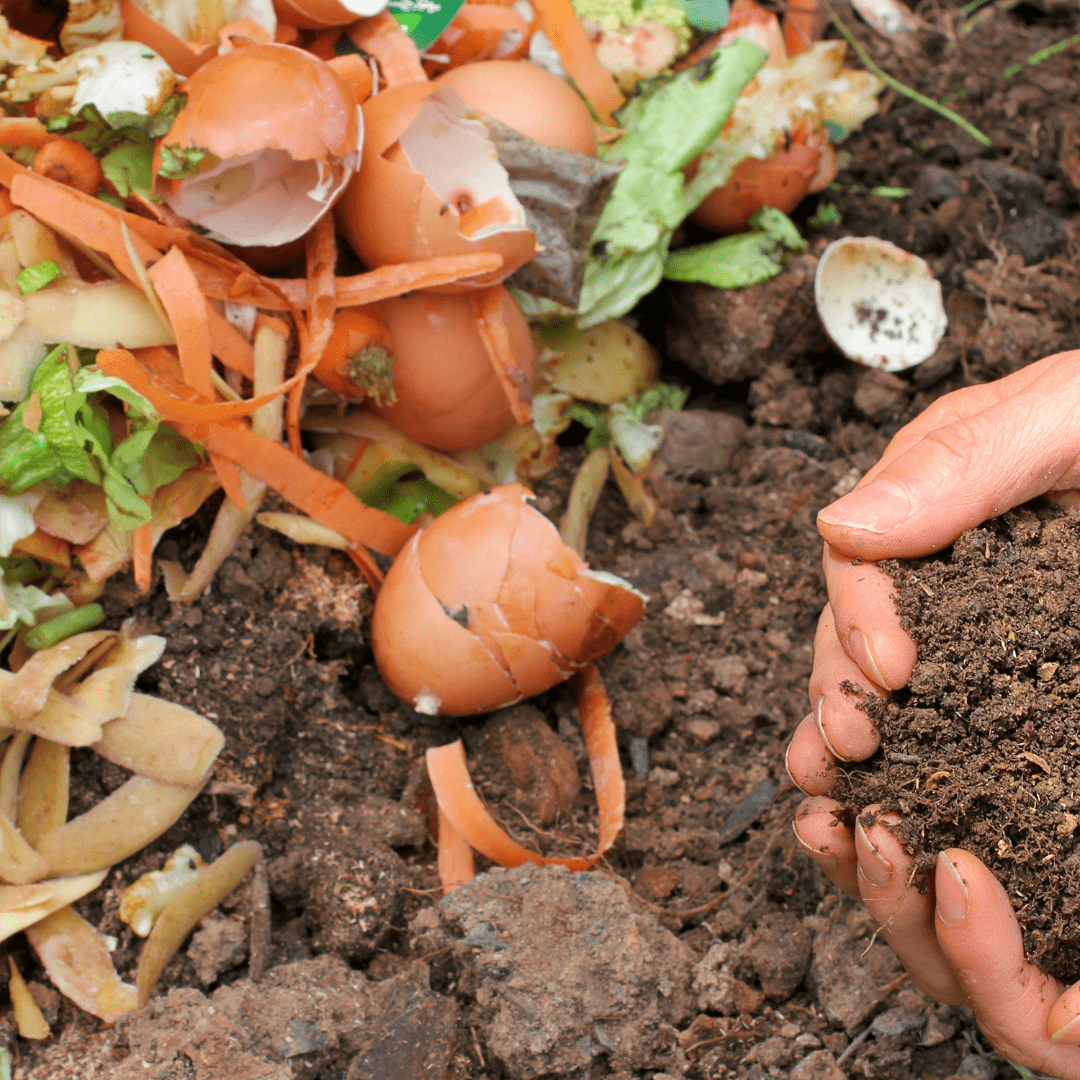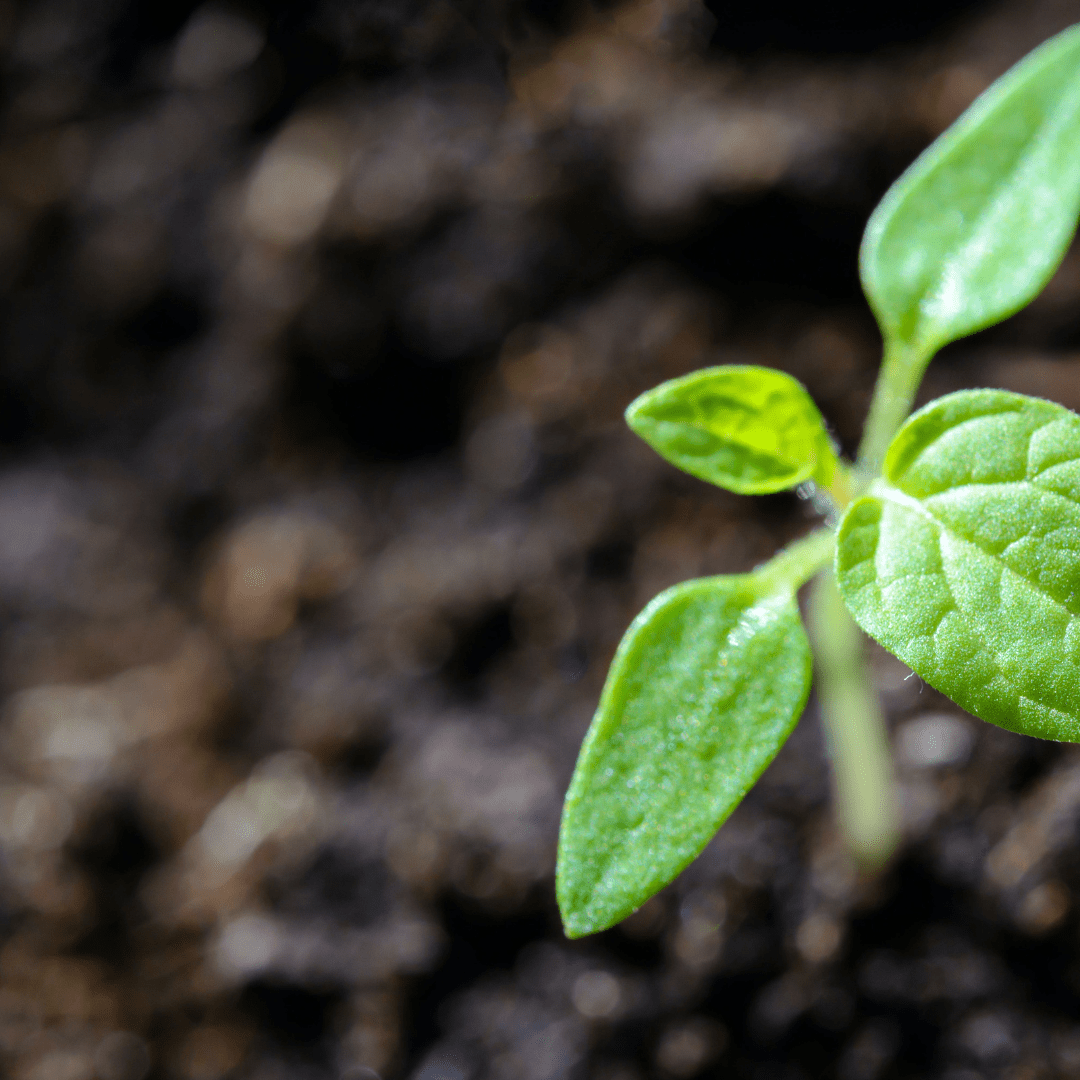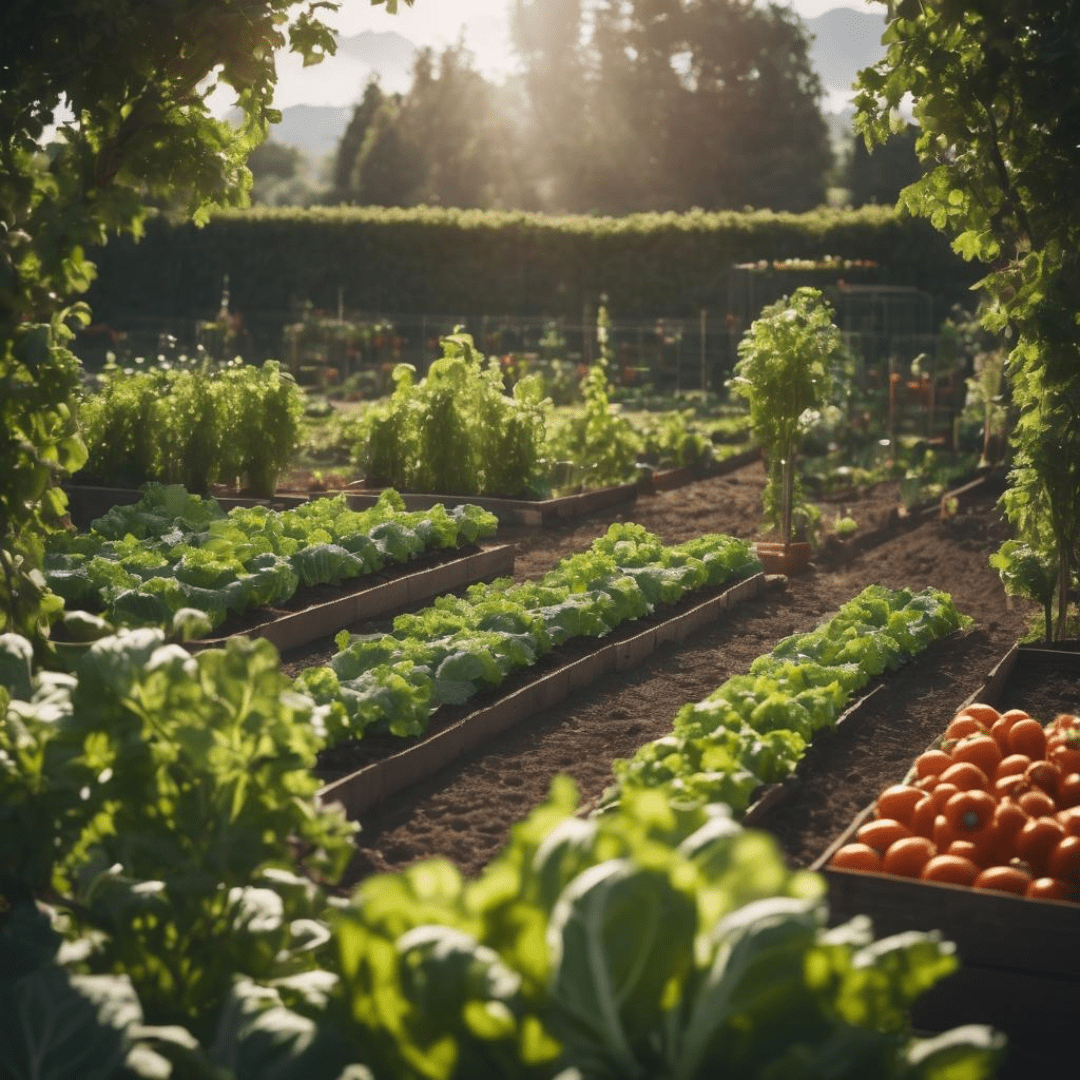Spring gardening problems.
What Is Included in This Post:
Unpredicted Spring Weather Conditions (Avoid Spring Gardening Problems)
Germination Issues
Stressed-Out Seedlings
Planting Too Early (Avoid Spring Gardening Problems)
Choosing The Wrong Plant Varieties
Planting Plants Too Close Together
Hardening Off Plants Too Early
Not Sanitizing Your Tools, Equipment, and Containers.
Spring gardening alone has many problems from unpredicted weather conditions, seeds not germinating, seedlings looking rather ill, confusion about when to plant, not planting the right varieties of plants for our area, planting plants too close together because they are cute and tiny in the beginning, killing seedlings during hardening off outside and spreading diseases with unsanitized tools, equipment, and containers. We have all been there and done many of these mistakes and I am guilty of these gardening crimes myself.
Spring can trick us all into thinking that it is time to plant new plants and bring our indoor plants back outside and then the unspeakable sneaky frost swipes in unannounced to kill them all.
This post will help better prepare you for your spring gardening and help you have a successful growing season. Let’s elaborate further on unpredicted spring weather conditions.
This is a pinnable post. Tap or hover over any image in this post to pin to your Pinterest Boards.

Unpredicted Spring Weather Conditions (Avoid Spring Gardening Problems)
Springtime is a tough time. Right when you are excited that spring has arrived, the weather conditions take a step back and you have to go through a second winter and sometimes a third or fourth winter. This spring for me in 2023 in Utah, we experienced winter blizzards all through April.
It is crucial to pay close attention to the weather channel during the spring season to know what conditions to expect out in your garden. While spring weather is unpredictable, there are steps you can take to protect your precious plants from weather fluctuations.
Aside from paying close attention to the weather channel for frosty conditions, it is also important to know the planting zones and planting calender for your area. The Farmer’s Almanac is a great resource for helping you better understand your climate better.
Protecting Your Outdoor Plants
Help protect the outdoor plants with plant blankets and row covers to help protect them from frosty conditions. These can help keep the snow off the plants and out of the garden beds.
You can also keep snow from piling up in the garden around precious plants that are just waking up in the spring by placing portable greenhouses over their garden beds. If you are lucky enough to have a big greenhouse, you can keep all your plants inside until the weather is sunny and warm enough to bring them back out to their garden plots.
Providing your garden beds with thermal cold frames can help your plants thrive during the coldest of months. With thermal technology and the rays of sunlight from the sun, your plants can survive any long and frosty weather conditions.
- Pay close attention to the weather channel for unexpected frosty conditions.
- Know your planting zones and planting calender for your area.
- Protect plants that are already outside with plant covers, greenhouses, and cold frames.
Germination Issues
Germination issues are common spring gardening problems. To help your seeds germinate, be sure to order seeds that have high ratings of germination success.
Once you do have the good seeds, you need to know how to properly store them until you are ready to plant and germinate them. Store seeds according to packaging or in a dark cool dry environment.
Speed Up the Germination Process
Sometimes seeds have long germination times so be sure to allow them enough time to germinate before you get frustrated from looking at bare soils with nothing popping through and end up tossing them out.
To help speed up the germination process, pre-sprout the seeds and eliminate some of the wait time. You can do this by placing the seeds inside a damp paper towel and placing the damp paper towel inside a plastic ziplock bag. Be sure to label each bag with the contents of seeds that are inside so you do not forget what seeds you placed in there!
Why You Need to Pre-Sprout Your Seeds
Pre-sprouting your seeds in damp environments like this help eliminate accidentally drowning them in soil that has been watered too much. It also prevents mold from appearing on the top layers of the soil when watered too much and the seeds may rot.
Sometimes when seeds are watered too much, they end up floating to the top and you walk away without realizing only to find out that it is too late to save them.
This also helps eliminate the fear of burying the seed too deep and not germinating because the soil is too much for it to pop through. The damp paper towel and plastic bag are the perfect germinating environment for seeds to sprout.
Provide the Best Seedling Environment
Once you have pre-sprouted your seeds, further your success for your seedlings to be healthy enough for transplanting time by offering them the right environment by providing them with some good germination kits and grow lights.
If your seeds still for some reason fail to germinate and you have done all of these steps and beyond, just know it is not your fault and it was their will to not pop through the soil. I know it’s sad, but take your loss and happily move on. Don’t worry, it happens to the best of us.
- Buy high-quality seeds.
- Store seeds according to packaging or in a dark cool dry environment.
- Pre-sprout seeds for faster and better germination.
- Provide the best seedling environment with warming mats and grow lights.
- If all else the seeds fail to germinate, just take your loss and move on!
Stressed-Out Seedlings
Plants get stressed out just as we do when they do not get the proper nutrition and needs they need to thrive. Most of the time, common stressed-out seedling issues can be easily fixed.
The most common reasons seedlings are stressed are due to over or under-watering, nutrient deficiencies, inappropriate environments (too hot or too cold), and not enough sunlight or too much sunlight. Seedlings require the right amount of each of these factors to thrive and become healthy.
Signs of Stressed-Out Seedlings
- Drooping over.
- Yellow leaves.
- Not growing.
- Dying.
- Wilting.
- Burnt leaves.
- Discolored leaves.
- Cripsy leaves.
- Spots on leaves.
- Leaves fold in.
- Seedlings are leggy and too tall and droopy.
Provide the Right Growing Environment and Nutrition
Provide the right growing environment and nutrition for your seedlings to thrive. Start them off by pre-sprouting as mentioned previously and place them inside a good-quality growing environment with a grow kit. Grow kits offer heating mats and grow lights to help seedlings grow strong and healthy.
Provide the Correct Amount of Water By Bottom-Watering Your Seedlings
It is typically best to bottom-water seedlings by watering them with a tray underneath their cell trays. This prevents overhead watering and drowning them and causing them to be water-heavy and falling over.
You can bottom-water your seedlings by placing the growing cell trays with draining holes in another tray without draining holes that hold the water. The seedlings will soak up the water that they need from the bottom rather than from the top.
- Watch for signs of stressed-out seedlings.
- Provide the right growing environment and nutrition.
- Provide the correct amount of water by bottom-watering your seedlings.
Planting Too Early (Avoid Spring Gardening Problems)
Planting too early in the spring can cause stunted growth and disease. Soil temperatures may not be the correct growing environment for seedlings to grow and thrive. If you plant your seedlings too early in the cold spring soil, they may not grow at all and die.
Ideal soil temperatures in spring should be between 55 and 65 degrees before planting seedlings. Be careful when planning your garden because the soil and weather temperatures are different. Just because the temperature outside states that it is 60 degrees, it does not mean that your soil is 60 degrees. It is important to test the temperature of your soil before planting your seedlings.
Testing Your Soil Temperature
Get yourself a good soil thermometer to test the temperature of the soil before planting. Resist the urge to plant your seedlings in the garden by ensuring the soil temperature is at least 55 to 65 degrees on a consistent daily basis for one week before planting and the danger of frost has passed and who knows when that’ll be!
Starting Seeds Too Soon
I have been guilty of planting too soon. One hopeful spring, I was anticipating a very successful huge garden. I started all my vegetable seeds and was expecting to place them in their prepared plots as carefully planned. I disregarded many recommendations for certain seeds and started them anyway such as corn and pumpkins.
Once I soon learned that you cannot start corn and pumpkins indoors and hope for a successful transplant, I switched gears and planned to plant them directly outside once the soil warmed up. Well, maybe pumpkins, but mine did not do well that year. Corn does not like to be transplanted and I knew this and started the seeds indoors anyway. They were shocked that I did this to them and they punished my efforts by not growing well. Therefore, be sure to follow each seed according to the packaging of how to germinate and grow them. I learned my lesson quickly that corn grows rapidly and does not transplant well.
Do not start your seedlings of any kind too early as you will cause unnecessary stress on their part to survive too long in tiny growing trays and inadequate lighting.
As mentioned at the beginning of this post, spring weather is inconsistent and unpredictable. If you start your seeds too soon indoors, you just may find yourself fighting to keep them alive until the unexpected cold temperatures and the threat of snow have passed.
- Avoid planting too early outside.
- Test soil temperatures before planting seedlings.
- Avoid starting seeds too soon due to unpredicted spring weather conditions.
Choosing The Wrong Plant Varieties
When you choose the wrong plant varieties for your climate, you are setting your garden up for failure. It is a huge mistake to plant the wrong plant varieties for your climate as the plants will likely be unable to thrive.
It is well worth your time, effort, and money to do your research when selecting plant varieties that grow in your climate.
You can eliminate much research on your end if you buy your plants from a trusted local plant nursery.
- Choose climate-appropriate plants for your area.
- Purchase plants from a trusted local nursery.
- Do your research before planting any plant in your garden.
Planting Plants Too Close Together
Avoid the mistake of planting plants too close together. Research spacing requirements for each plant’s spacing needs before planting them in the garden.
You can set your garden up for success with my FREE Square Foot Garden Printable Planner, which offers valuable information including plant-spacing requirements for vegetables. To do this, scroll up or see my sidebar for more information by signing up to my email list to acquire this FREE Square Foot Garden Printable Planner.
I used to sell this planner on Etsy, which sold pretty well, but I now offer it for free for my readers by subscribing to my email blog. Most of the emails will be just new post notifications. I am NOT a spammer! Therefore, I hope you sign up for your free copy. You will get a charted list of how many vegetable plants per one square foot of garden space to plant for a successful garden.
I made the mistake of planting my vegetables too close together before I learned the space requirements of each vegetable plant. Last year, I planted my tomatoes very close together with my pepper plants too close in the adjoining rows. I soon learned my tiny tomato plants grew so rapidly large and shadowed out my pepper plants. I had to move the tomato plant branches to find my little pepper plants that were unable to get the proper sunlight and were screaming for help.
- Avoid planting plants too close together. They will compete for sunlight, water, nutrients, and space.
- Download my FREE Square Foot Garden Printable Planner for space requirements for vegetable plants.
Hardening Off Plants Too Early
Since you have spent so much time, energy, effort, and money into growing your seedlings, the last thing you want to do is kill them off by not properly transplanting them outside. Start them off healthy by learning to harden them off properly to thrive outside in their new garden plots. Hardening off your plants means that you are preparing them for their outdoor environment day by day. Seedlings need to adjust to the elements of sunlight, wind, and rain that they will be facing.
They are just babies in their tiny cell trays with a warm mat and cover and light. They have not yet experienced harsh wind, rain, and fluctuations in temperatures.
Harden off your seedlings by placing them outside for a few hours and increase the time outside per day for at least a week.
Before placing your precious seedlings out in the garden after hardening off, you should have already completed the previous requirements of ensuring the soil temperature is above 55 degrees consistently.
- Prepare and harden off seedlings day by day, lengthening the hours exposed to outside elements.
- Ensure soil temperatures are above 55 degrees consistently before planting.
Not Sanitizing Your Tools, Equipment, and Containers.
You should be cleaning and disinfecting your gardening and horticultural tools every season to prevent the spread of disease in your garden and on your property.
If you are not going to disinfect or sanitize your gardening tools throughout the season, at least designate one tool per area of your garden.
For instance, do not use the same tool that you use for turning your compost bin for digging a small hole in your garden plot to plant a new plant. If you do this, you could spread diseases from your compost bin to your garden bed, which could result in the devastation of your whole garden.
Also, remember to clean and disinfect pruning tools each season before pruning perennial bushes and trees. This helps prevent the spread of diseases from season to season.
Remember to clean and disinfect all of your tools, planting containers, and seed-starting trays each season as well to prevent diseases transported through left-over soil from the previous season.
- Clean and disinfect all gardening, horticultural, and seed-starting containers every season to prevent the spread of disease.
- Designate one tool per area of your garden. (Do not use your compost shovel for your garden beds!)
Summary
I have mentioned several spring gardening problems that you can easily overcome with these tips.
I hope I have inspired you to start your spring garden on the right path to a successful planting season and help your garden thrive.
If you were encouraged by this post, I invite you to check out my FREE Self-Sufficiency Academy for fun free printables, planners, and charts.
ENTER MY FREE SELF-SUFFICIENCY ACADEMY HERE
Here are some more of my gardening inspiration posts to check out!
Why I Built A Survival Garden in My Backyard
How to Grow A Foodscape Garden From Scratch
16 Best Medicinal Herbs to Grow in Your Garden Now
Blessings,
The Off Grid Barefoot Girl





